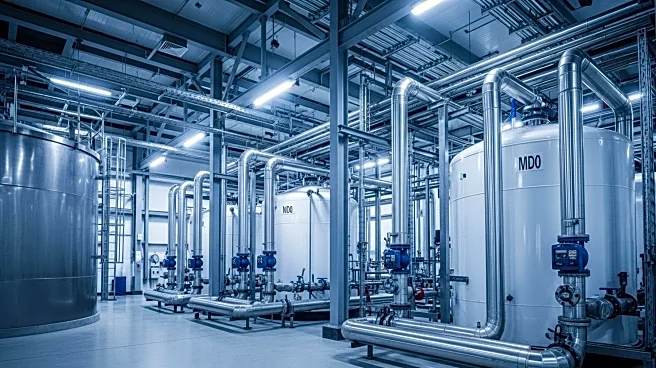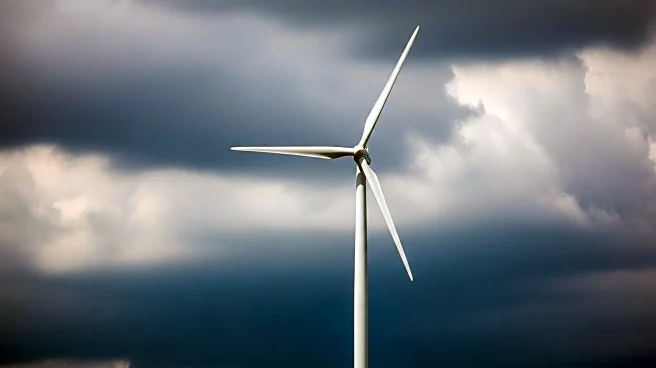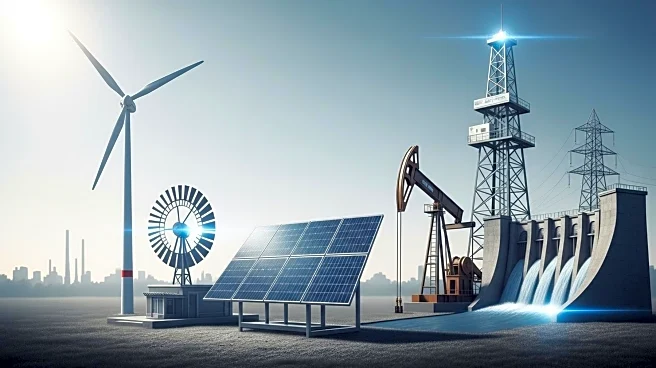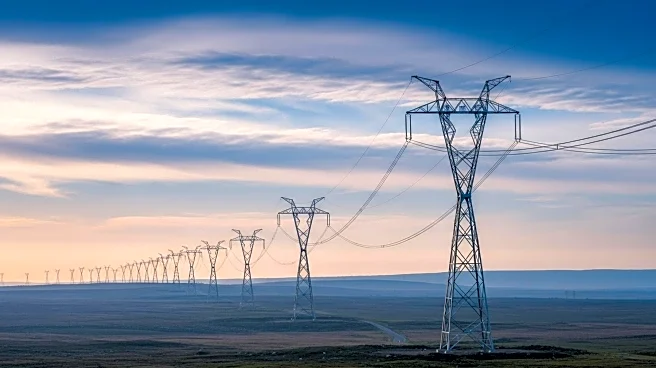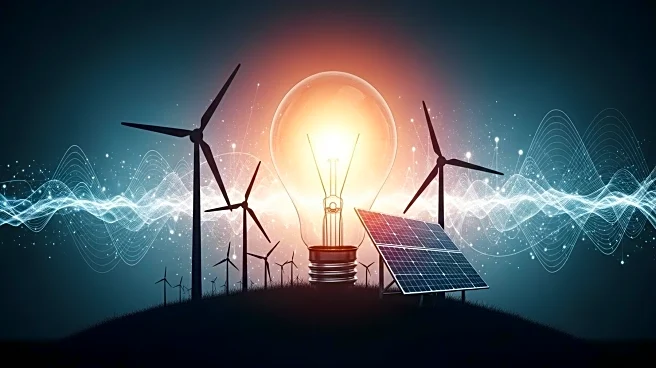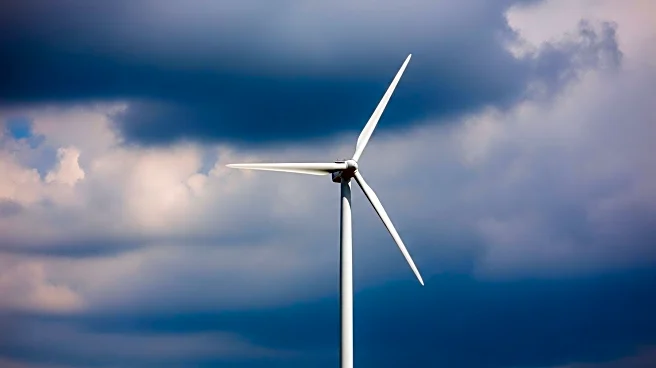What is the story about?
What's Happening?
A new liquid air energy storage facility is being developed near Carrington in north-west England, aiming to provide an alternative to traditional energy storage methods like grid-scale lithium batteries and pumped hydro. This facility, spearheaded by Highview Power, utilizes a process where air is compressed and cooled until it becomes liquid, allowing it to be stored and later expanded to generate electricity. The technology, which has been overlooked for nearly 50 years, is now gaining attention as the demand for clean energy storage increases. The facility is expected to power up in 2026, marking a significant step in renewable energy storage solutions.
Why It's Important?
The development of liquid air energy storage is crucial as the world shifts towards renewable energy sources to reduce greenhouse gas emissions and combat climate change. This technology offers a potential solution to the intermittency problem faced by electricity grids relying on solar and wind power, which are not always available. By providing a reliable storage method, liquid air energy storage could facilitate the transition from fossil fuels to cleaner energy sources. Although currently expensive, the growing need for clean energy storage may drive the adoption of this technology, potentially benefiting countries looking to enhance their renewable energy infrastructure.
What's Next?
If successful, the Carrington facility could pave the way for more liquid air energy storage projects globally. Highview Power is optimistic that this technology will become more cost-effective as demand for clean energy storage solutions rises. The success of this facility could encourage other countries to invest in similar projects, further reducing reliance on fossil fuels and supporting the global shift towards renewable energy. Stakeholders in the energy sector, including policymakers and environmental groups, will likely monitor the progress of this facility closely.
Beyond the Headlines
The adoption of liquid air energy storage could have broader implications for energy policy and environmental strategies. It may influence how countries plan their energy infrastructure, potentially leading to increased investment in innovative storage technologies. Additionally, this development could spark discussions on the economic and environmental benefits of transitioning to renewable energy, highlighting the importance of sustainable practices in combating climate change.
AI Generated Content
Do you find this article useful?
